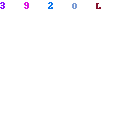DATA ANALYSIS and PERSONA MODELING
Not sure of target market? Time to develop persona modeling skills. For SM, see number 4 below.

Data analysis and persona modeling can be effectively integrated to create a more refined and accurate representation of target users or customers in the travel and tourism industry. Here's a step-by-step guide to integrating data analysis with persona modeling:
- Data Collection:
- Begin by gathering all available data on your customers. This can come from booking platforms, feedback surveys, website analytics, social media interactions, and more.
- Focus on both quantitative (e.g., age, location, spending) and qualitative data (e.g., reviews, feedback).
- Segmentation:
- Use data analysis to segment your customer base into distinct groups based on shared attributes or behaviors. For instance, segments can be based on travel purpose (business vs. leisure), frequency of travel, budget, preferred destinations, and so forth.
- Identify Patterns & Trends:
- Within each segment, identify common trends and behaviors. This might include preferred travel seasons, common complaints, typical length of stay, or favorite activities.
- Use machine learning or clustering algorithms (like k-means clustering) to find patterns in large datasets if available.
- Craft Persona Profiles:
- Using the insights gained, begin crafting detailed persona profiles. A persona might be something like "Budget Backpacker Brenda" or "Business Traveler Tom."
- For each persona, provide demographic details, psychographic details (like motivations and fears), behavioral patterns, and any other relevant information.
- Refine with Qualitative Insights:
- While data analysis provides a solid foundation, personas are enriched by qualitative insights. Conduct interviews, focus groups, or surveys with select individuals from each segment to get deeper insights.
- Use this feedback to further refine and add depth to each persona, making them more representative of real-world users.
- Iterative Refinement:
- Continually update and refine personas as you gather more data and insights. Consumer behavior isn't static, especially in an industry as dynamic as travel and tourism.
- Regularly analyze data to see if your personas are still accurate or if they need adjustments.
- Application in Strategy:
- Use these data-informed personas to guide your marketing, product development, and customer service strategies. Tailor experiences and offerings to the specific needs and preferences of each persona.
- For example, if data analysis shows that "Budget Backpacker Brenda" often books last-minute deals and prefers hostels, you might focus on sending her flash sale notifications or collaborating with hostels for special offers.
- Measure & Validate:
- After implementing strategies based on your personas, measure their effectiveness. Are you seeing increased engagement or bookings from the target persona groups?
- Use A/B testing and other validation techniques to ensure that your strategies based on personas are actually resonating with the intended audience.
Integrating data analysis with persona modeling ensures that your personas are not just based on assumptions or broad stereotypes but are grounded in real, actionable data. This makes for more effective marketing and product strategies, leading to better customer experiences and business outcomes.